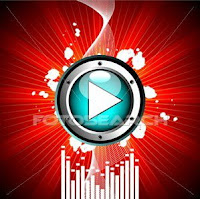
Electro (electro-boogie, electro-funk) is a genre of electronic music directly influenced by the use of TR-808 and funk records. Records in the genre typically have electronic sounds and some vocals are delivered in a deadpan, mechanical manner, often through a vocoder or other electronic distortion.
Electro is an artistic musical form in the wide world of electronic music culture. With few exceptions, the definition of the electro sound is the use of drum machines as the rhythmic base of a track. Rhythm patterns tend to be electronic emulations of breakbeats, with syncopated kick drums, and usually a snare or clap accenting the downbeat. The definition however is somewhat ambiguous in nature due to the various use of the term.
Staccato, percussive rhythms dominate electro, with beats often provided by the Roland TR-808 drum machine. The TR-808, created in 1980, has an immediately recognizable sound, and remains popular in electro and other genres to the present day. Other electro instrumentation is generally all-electronic, favoring analog synthesis, funk-style bass lines, sequenced or arpeggiated synthetic riffs, and atonal sound effects all created with synthesizers. Heavy use of effects such as reverbs, delays, chorus or phasers along with synthetic ensemble strings or pad sounds emphasize the common sciene fiction or futuristic theme of the lyrics and/or music. Most electro is instrumental, but a common element is vocals processed through a vocoder. Additionally, speech synthesis may be used to create robotic or mechanical lyrical content. Some earlier electro features rapping, but that lyrical style has become less popular in the genre from the 1990s onward.












